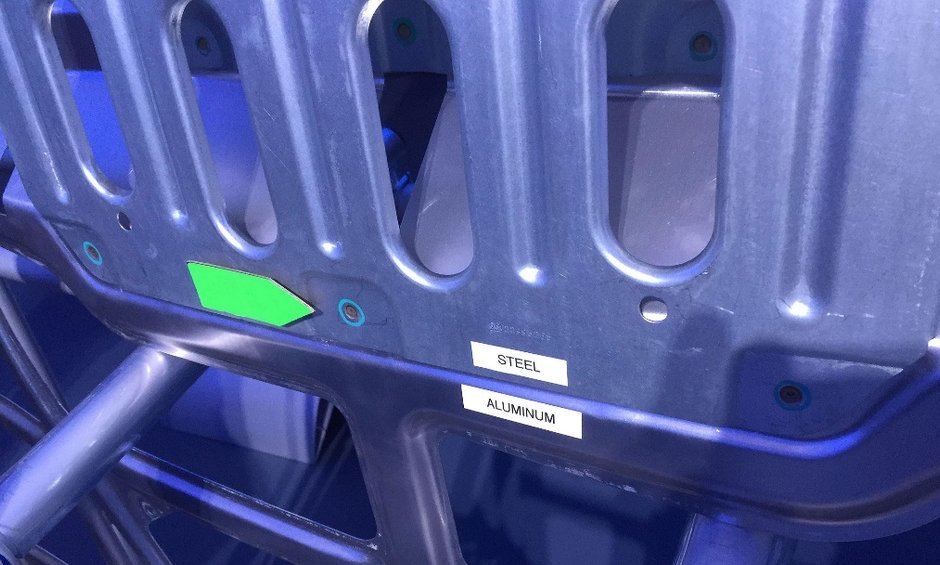There’s more to lightweighting than shedding pounds.
It’s about getting the weight out of the vehicle andbeating your competitors on cost.
Ford chopped as much as 700 pounds off the F-150 in 2015 by switching the body from steel to aluminum. But in doing so, it added cost. A lot of it. Such as nearly $1 billion to retool two truck plants and the added expense of buying more expensive metal.
Some of those added costs are recouped by Ford’s ingenious recycling system, but aluminum is still more expensive to buy. It’s also more expensive to assemble than steel. All those rivets and screws holding the F-150 together cost more than welds and add weight. The F-150 has more than 4,000 rivets.
General Motors thinks it has a better idea with its mixed-materials manufacturing strategy. I’m inclined to agree.
GM engineers recently - finally - explained in detail how the company is removing weight from cars and light trucks without tearing up factories and manufacturing infrastructure.
The Cadillac CT6, in production since early this year, is GM’s first complete vehicle with a body made from mixed materials -- several grades of steel, sheet aluminum, sheet and castings, aluminum extrusions and magnesium. The process of building the big Cadillac sedan is a precursor to GM’s next-generation full-size pickups, coming in late 2018 or sooner. The CT6 is the lightest vehicle in it class.
“No single material is the right answer for every part of the body,” says Charlie Klein, executive director of GM’s global CO2 strategy and energy center engineering. “Each material has its own properties. We use the best material for each component, the right material in the right place and the right amount of material.”
That’s one part of GM’s lightweighting strategy. Another is adapting the production machinery the company has already invested in. Because GM welds aluminum panels in the CT6 using the same robots that weld steel panels, it avoided a Ford-like remake of U.S. and China plants where the car is manufactured. The CT6’s welds alone eliminated 1,800 rivets and 4 pounds of weight.
The CT6 will be the first vehicle on the road that uses steel-to-aluminum welded parts. The first application of the manufacturing process will be the seat frame, and engineers are close to approving its use on a bracket in the hood. This is a particularly tricky assembly method because of corrosion issues and temperature differences: Aluminum is already molten by the time steel is just getting warm.
Other ways GM is reducing weight is by cutting holes in parts and using less metal on the flanges of panels that have to be welded together. The results of GM’s lightweighting strategy so far have been impressive.
Curb weights are coming down, and not just by a few pounds. The redesigned 2016 Chevrolet Malibu dropped 300 pounds over the 2015 model. The 2016 Chevy Camaro is not only 400 pounds lighter than the 2015 car, but it weighs nearly 200 pounds less than its archrival, the Ford Mustang. The Chevrolet Volt and Cruze, also redesigned this year, each weigh about 250 pounds less than the cars they replace.
Two things make those weight savings numbers even more impressive. First, engineers struggle to save ounces. Saving, say 10 pounds, is a major victory. Shaving hundreds of pounds off vehicles -- without massive downsizing -- is unprecedented. And second, GM is reducing vehicle weight at the same time content is increasing.
While Ford has reduced the weight of the F-150, it hasn’t done much else. Curb weights for the Escape, Explorer, Edge, Fusion and Focus are all up over the vehicles they replaced. FCA doesn’t talk about reducing weight; neither does Toyota or Nissan, both of which are lagging far behind in the use of aluminum and other lightweight metals.
Auto writers and consumers tend to expect the powertrain to do most of the heavy lifting when it comes to reducing CO2 emissions and improving fuel economy. Klein says GM looks at vehicle development more broadly than that and is combining its lightweighting expertise with advanced propulsion systems, optimized components and aerodynamic refinements.
Future lightweight components GM plans to introduce include carbon-fiber wheels for regular production vehicles and one-piece composite -- glass fiber sheet and metal -- floorpans for cars.
Marco Palmieri, senior vice president of North America for aluminum supplier Novelis, told me he sees GM’s mixed-materials strategy, not complete aluminum bodies, as the future.
“There will be more mixed-materials vehicles, and we may see some all-aluminum vehicles, such as luxury cars with volumes of between 100,000 and 150,000 vehicles per year, changing to all aluminum. That is my own view,” he told me.
I like to say that GM is either scary bad or scary good. The company’s past troubles have been well-documented. But GM’s lightweighting strategy reveals a company on top of its game in engineering and product development.
When was the last time you could say that about GM?
Source: autonews.com
×


